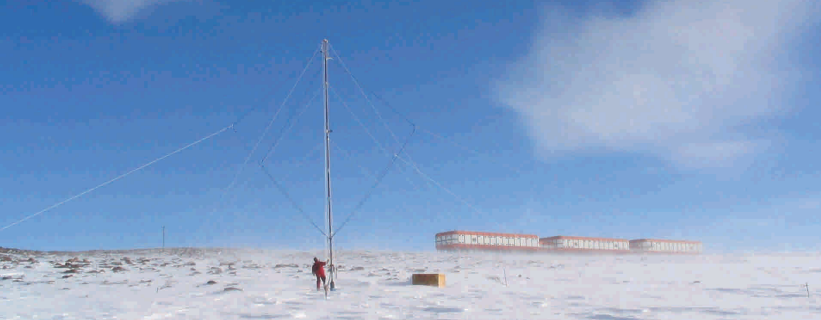Understanding Our Space Environment
Understanding Our Space Environment
Space physics is the study of the space environment and its interaction with the Earth. The gases that we know in our everyday lives consist of neutral atoms. The gases in space exist in a hot, fully ionised state called plasma in which the constituent particles are charged electrons and ions. Because of this, plasma interacts with electric and magnetic fields very differently than gas made of neutral atoms or molecules. Plasma physics has long been studied in laboratories. However, space provides a natural and large-scale laboratory for the study of plasma processes. Space physicists seek to understand the complex plasma environment of the Earth, shaped by the interaction of the solar wind with the atmosphere and magnetic field of the Earth. They do this by studying aurorae, geomagnetic storms, cosmic ray acceleration and propagation, solar flares, etc. These phenomena are studied using in situ measurements by satellites or rockets and complementary measurements done from the ground using radars and photometers. South African space scientists work at the Hermanus Magnetic Observatory, the South African base in Antarctica and at various universities.
“Space weather” is the term applied when the phenomena of space physics assume practical or economic significance. From a space physics perspective it could be said that the Earth is inside the extended atmosphere of the Sun. The effects of storms on the Sun are felt on the Earth. Geomagnetic storms are therefore a natural hazard, like hurricanes and tsunamis. Particularly severe storms interfere with the operation of, or cause serious damage to, spacecraft systems, radio signals, aircraft navigation, power grids and oil pipelines. The same satellites that observe the Sun and study space physics can be used to provide early warning of the onset of severe space weather events, allowing operators of sensitive systems to take evasive action. The Hermanus Magnetic Observatory is a Regional Warning Centre in the International Space Environment Service. It is the only such Centre in Africa and, as such, it contributes to rapid exchange of space weather information and space weather forecasts.

Satellites are important tools to study geomagnetic phenomena. Scientific satellites in low-Earth orbit provide an ideal platform for obtaining global magnetic field measurements required to produce accurate models of the Earth’s magnetic field. The phase delay in Global Positioning System (GPS) satellite radio signals can be used to determine certain parameters of the ionosphere, a region in the upper atmosphere of importance to radio communications and radio direction finding.
The icy continent of Antarctica does not belong to any single country, but several countries have bases there. South Africa has had an Antarctic research base since 1962. Data gathered at this base are used to study the upper layers of the atmosphere in detail, especially the ionosphere and the magnetosphere. Information is also gathered about the ozone hole. Due to the configuration of the Earth’s magnetic field, solar-induced space weather phenomena are best studied in the polar regions. These ground-based measurements complement the data obtained from space by satellites.
